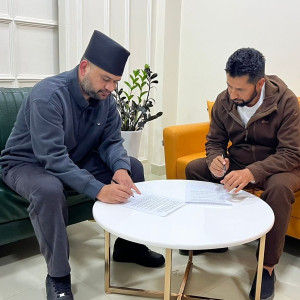Editorial
Fending for themselves
There can be no excuse for the poor handling of the post-disaster situation in Karnali’s quake-affected districts.
Almost three months after the November 3 Jajarkot earthquake, thousands of displaced people are still languishing under flimsy tents in freezing temperatures in affected mountainous districts. While Jajarkot and Rukum East were worst hit by the magnitude 6.4 quake, it also affected neighbouring Salyan. Over 150 people were killed both during the earthquake and while undergoing treatment in the immediate aftermath. More than 35 other survivors died from cold-related ailments as they were compelled to live in tarpaulin tents in shivering cold.
Over 110,000 families are estimated to have been displaced in Jajarkot, Rukum West and Salyan districts. The majority are still living under tents in open fields, resulting in multiple problems, mainly health-related complications. The situation is especially bleak for the elderly people, children, pregnant women, mothers in postpartum period and the disabled.
Deaths in such disasters are unavoidable. But in the Jajarkot quake, many lives could have been saved with a little more effort. According to health workers in the area, a large number of earthquake survivors suffered from diarrhoea, pneumonia, fever, cold-related complications, and other problems. At least the majority of the 35 displaced people who died, mostly from cold-related complications, could have been saved had their rehabilitation been better managed and expedited.
The death toll in the quake was disproportionately high in comparison to its magnitude. Many of the deceased in the three districts were killed by the feeble houses they inhabited. To start with, had more been done to enforce building codes, many lives would have been saved.
A more serious error in the later phase was not quickly shifting the displaced people to safe temporary huts. The government, including the provincial and local ones, which were commended for swift post-quake rescue operations, failed miserably on the rehabilitation part. Some political parties had announced plans to help build temporary huts in affected areas. Also, non-government organisations and individuals had come forward to help the needy. But over time, it seems, they all forgot the plight of the people of Karnali. If over 150 people have to die in a quake of this scale and the state agencies can’t properly manage rehabilitation in three districts, it is obviously woefully unprepared to tackle a major disaster.
Given Nepal’s extensive experience of working in rescue, rehabilitation and reconstruction mainly after the 2015 mega earthquake, the country could have more efficiently handled the post-Jajarkot situation. Despite confusions and chaos immediately after the devastating quake over eight years ago, the authorities gradually put the rehabilitation and reconstruction work on the right track. A major foundation that guided such work at the time was the Post Disaster Need Assessment (PDNA). That document clarified many things for domestic as well as international actors who were involved in rehabilitation and reconstruction works. This time, such a comprehensive document was missing, as even the voices of experts in the field were ignored.
Again, the country hasn’t learned much from the 2015 disaster. Just ask the abandoned victims of the November 3 Jajarkot earthquake.




 5.05°C Kathmandu
5.05°C Kathmandu














